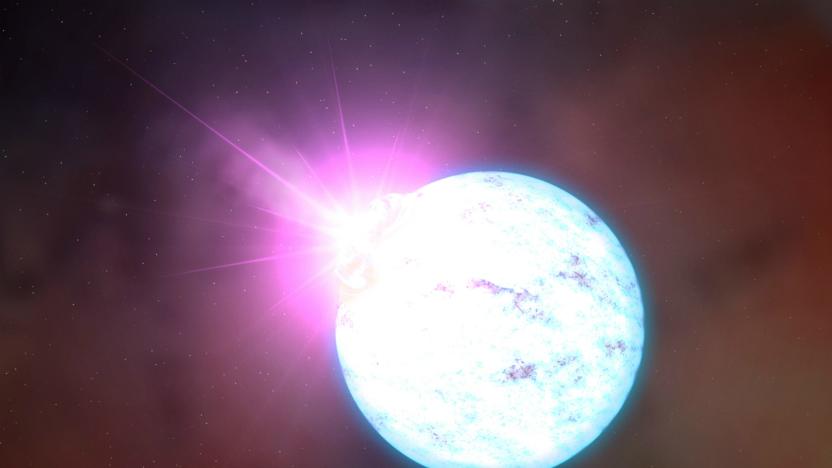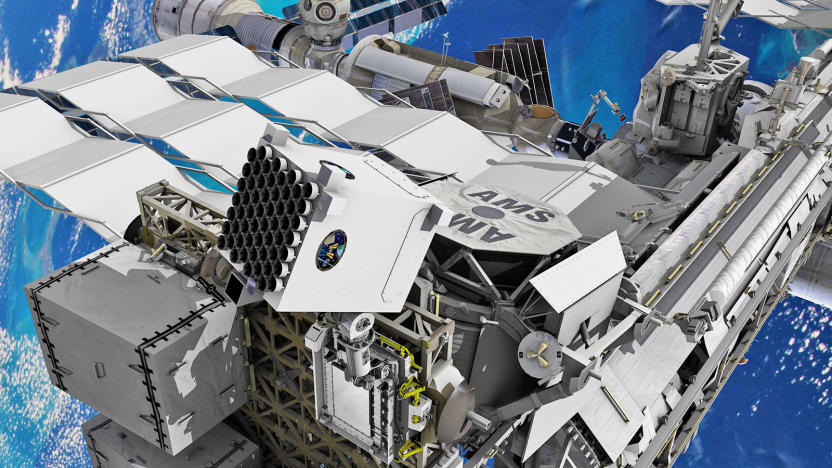neutronstar
Latest

Researchers may have witnessed the birth of a black hole
Researchers believe they might have an explanation for an incredibly bright event that took place in a distant dwarf galaxy. Scientists observed it last June when the object in question lit up and then faded over the course of 16 days, and it has continued to spark interest and debate. Based on the data collected at the time, a number of researchers now think the event was the creation of either a black hole or a neutron star.

NASA is investigating X-Ray navigation in space
X-rays aren't just for investigating artworks or photographing black holes. NASA scientists just used them to demonstrate a new technique: Navigating the stars. In an experiment, equipment mounted on the International Space Station measured radiation beamed out from distant neutron stars in millisecond pulses -- and by timing their arrival, future spacecraft could find their location from deep space.

Astronomers just measured a whole lot more than gravitational waves
A couple of weeks ago, the LIGO (Laser Interferometer Gravitational-Wave Observatory) and Virgo teams announced the detection of another set of gravitational waves -- the fourth since LIGO's first detection in September of 2015. The observations of these ripples in spacetime are extraordinary in and of themselves, no matter how many times we record them. However, while the first three sets of gravitational waves recorded were by the two LIGO observatories, the fourth was also detected by a newly established third -- Virgo -- located in Italy. And having three detectors allows researchers to triangulate the source of those waves with extraordinary precision.

Scientists record a fourth set of gravitational waves
Last year, researchers confirmed the existence of gravitational waves with two Laser Interferometer Gravitational-wave Observatory (LIGO) detectors. Shortly thereafter, they detected two additional gravitational wave-causing events that sent ripples through the universe. Well, we can now add a fourth to that list, as astronomers announced another set of waves. And for the first time, they observed the waves with a third detector -- the Italy-based Virgo.

New computer models could direct scientists to epic cosmic events
Now that they're spotting gravitational waves more often, scientists are expanding their search for cosmic events. Specifically, they're using new computer models to depict the cataclysmic collision that occurs when a black hole joins a neutron star (the remnants of an exploded star). The simulations will help detectors track down the actual mergers using telescopes and advanced versions of LIGO (the Laser Interferometer Gravitational-Wave Observatory).

Watch SpaceX carry NASA's pulsar-observing instrument to the ISS
On June 1st, a SpaceX Falcon 9 rocket will carry supplies and new instruments to the ISS, including one designed to observe some of the strangest objects in the universe: neutron stars or pulsars. The Neutron Star Interior Composition Explorer (NICER) will be installed outside the ISS, where it will look for and study the extremely dense objects. Neutron stars begin their lives as stars around seven to 20 times the mass of our sun. When they collapse and cause a supernova explosion, they turn into a sphere that's only 12 miles across, with twice the mass of our sun squeezed inside. They're also called "pulsars" when they rotate hundreds of times per second.



